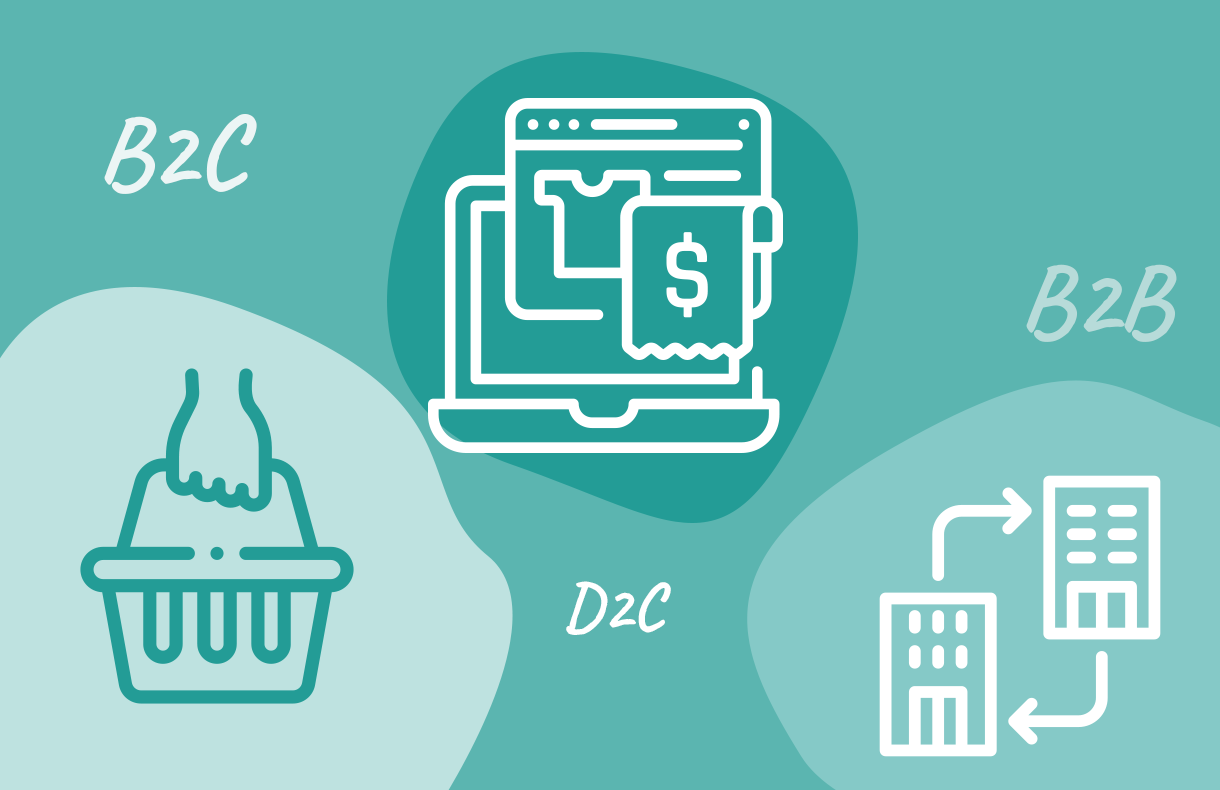Delight your customers with the best online buying experience
Perks of eCommerce
The global eCommerce boom has taken retailers by storm. Many retailers have already undergone a digital transformation, which eventually helped them earn more and grow successfully.
The opportunity to sell online has offered both customers and retailers plenty of advantages, such as:
- Customers can buy faster, as eCommerce allows shopping from anywhere, anytime.
- With minimal operating costs, retailers can launch online stores without needing a physical setup.
- Companies can tap into a more comprehensive section of the audience, catering to multiple geographical locations.
- Delivering personalized experience to the eCommerce client base has become more manageable with customer profile analysis.

Lure your clients with top-notch service
For an eCommerce business, it is tough for the customers to talk to an agent in person, unlike brick-and-mortar stores. This is precisely where the importance of excellent customer support comes to the forefront. You can ensure a fantastic customer experience only through excellent service – it determines a customer's confidence in your organization, helping you grow a loyal client base.

Kevin StirtzThe easiest and most powerful way to increase customer loyalty is really very simple. Make your customers happy.

Hot Trends
Social commerce is the industry's latest trend, where the entire shopping transaction (from browsing to checkout) takes place via social media platforms, allowing businesses to meet customers where they are. Usually, when you increase engagement on social platforms, you receive plenty of customer inquiries. To manage these inquiries via a single software tool, you need a cloud-based multichannel digital communication platform.
Artificial intelligence is undoubtedly the topic of discussion nowadays, primarily because of its capabilities – AI sets new standards in client servicing and empowers your support agents to excel in their day-to-day activities, increasing their efficiency. An AI-powered digital solution ideally helps improve every aspect of your business, including client engagement, customer loyalty, brand reputation, preventive measures, and revenue streams.
Marketing automation has become the new trend, showing no signs of stopping. If implemented correctly, marketing automation will let you send personalized emails to your customers, display new products as per the visitors' shopping history, and retarget customers for necessary product sales.

Popular eCommerce business models
From small start-ups to large enterprises, eCommerce companies adopt various business models, but the most popular ones are:
B2C – business to consumer (buying shoes from an online retailer is a B2C transaction)
B2B – business to business (sales made between businesses, such as a manufacturer and wholesaler or retailer)
D2C – direct to consumer (selling products directly to the end customer instead of going through a retailer, distributor, or wholesaler – subscription to OTT platforms or monthly magazines)

Jeff Bezos, CEO of AmazonIf you’re competitor focused, you have to wait until there is a competitor doing something. Being customer-focused allows you to be more pioneering.

Retail e-commerce sales worldwide
from 2014 to 2026
Retail e-commerce sales amounted to approximately 5.2 trillion U.S. dollars worldwide in 2021. This figure is expected to grow by 56 percent over the following years, reaching about 8.1 trillion dollars by 2026.
Source: Statista

A robust eHelpdesk always compliments a thriving eCommerce
Responding to a mountain of customer inquiries, solving customer problems, and delivering exceptional customer experience (everything simultaneously), becomes very challenging. But when you adopt a digital approach backed by AI-powered helpdesk software, consumers get treated to a brand experience that satisfies their needs.
With ThinkOwl’s digital communication software, you can be sure of taking your customer service to the next level because ThinkOwl helps you in many ways:
- Case management with the fastest response time
- Workflow automation with powerful AI
- Multichannel support that includes social media
- Seamless business process modeling
- AI-powered tools that ensure operational efficiency
- Profound analytics and reports on customer sentiments
Sign up to explore the platform. 30 days for free.

Ultimate guide to customer happiness
Check out this detailed guide on customer experience (CX):
- Understand the impact of CX on customer acquisition and revenue generation
- Know the significance of CX in improving your brand reputation in a competitive market.
- Get familiar with CX trends and best practices, along with valuable statistics.
- Learn how to formulate successful CX strategies
- Ensure 10x business growth by adopting digital transformation
Get the free Guide now!

Tackle the holiday season shopping rush
More shoppers mean more pressure on your service desk! The holiday season arrives with new challenges, especially for the customer service department. That's why being prepared is the best way to navigate the holiday shopping rush.
Here is a detailed blog article that discusses how eCommerce businesses should react during this crucial time of the year. Read it here, and for an engaging visual experience, don’t miss this video.
Please accept marketing-cookies to watch this video.
eCommerce-prone regions of the world
Borderless eCommerce is becoming a profitable option for online retailers. As a result, global retail sales growth will continue to rise and take up more retail market share.
Currently, the major regional markets for eCommerce are Asia-Pacific, North America, Europe, and the rest of the world, primarily with the country coverage of China, Japan, South Korea, the U.S., the U.K., Germany, France, India, Spain, and Italy.



